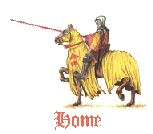The American Flag

"I pledge allegiance to the Flag of the United States of
America, and to the Republic for which it stands, one Nation
under God, indivisible, with liberty and justice for all."
The flag should be displayed on all days,
but especially on:
New Year's Day, January 1
Inauguration Day, January 20
Lincoln's Birthday, February 12
Washington's Birthday, third Monday in February
Easter Sunday (variable)
Mother's Day, second Sunday in May
Armed Forces Day, third Saturday in May
Memorial Day (half-staff until noon) the last Monday in May
Flag Day, June 14
Independence Day, July 4
Labor Day, first Monday in September
Constitution Day, September 17
Columbus Day, second Monday in October
Navy Day, October 27
Veterans Day, November 11
Thanksgiving Day, fourth Thursday in November
Christmas Day, December 25
And such other days as may be proclaimed by the
President of the United States,
the birthdays of States (date of admission)
and on State holidays.
Conduct during hoisting,
lowering or passing of the flag
During the ceremony of hoisting or lowering the flag or when the
flag is passing in a parade or in review, all persons present except
those in uniform should face the flag and stand at attention with the
right hand over the heart. Those present in uniform should render the
military salute. When not in uniform, men should remove their headdress
with their right hand and hold it at the left shoulder, the hand being
over the heart. Aliens should stand at attention. The salute to the flag
in a moving column should be rendered at the moment the flag passes.
Time and occasions for display
(a) Display on buildings and stationary flagstaffs in open; night display
It is the universal custom to display the flag only from sunrise to
sunset on buildings and on stationary flagstaffs in the open. However,
when a patriotic effect is desired, the flag may be displayed twenty-four
hours a day if properly illuminated during the hours of darkness.
(b) Manner of hoisting
The flag should be hoisted briskly and lowered ceremoniously.
(c) Inclement weather
The flag should not be displayed on days when the weather is
inclement, except when an all weather flag is displayed.
(d) Display on or near administration building of public institutions
The flag should be displayed daily on or near the main
administration building of every public institution.
(e) Display in or near polling places
The flag should be displayed in or near every polling place on election days.
(f) Display in or near schoolhouses
The flag should be displayed during school days in or near every schoolhouse.
Respect for flag
No disrespect should be shown to the flag of the United States of America;
the flag should not be dipped to any person or thing. Regimental
colors, State flags, and organization or institutional flags are
to be dipped as a mark of honor.
(a) The flag should never be displayed with the union down,
except as a signal of dire distressin instances of
extreme danger to life or property.
(b) The flag should never touch anything beneath it,
such as the ground, the floor, water, or merchandise.
(c) The flag should never be carried flat or
horizontally, but always aloft and free.
(d) The flag should never be used as wearing apparel,
bedding, or drapery. It should never be festooned, drawn back,
nor up, in folds, but always allowed to fall free. Bunting of blue,
white, and red, always arranged with the blue above, the white
in the middle, and the red below, should be used for covering
a speaker's desk, draping the front of the platform,
and for decoration in general.
(e) The flag should never be fastened, displayed, used, or stored in such
a manner as to permit it to be easily torn, soiled, or damaged in any way.
(f) The flag should never be used as a covering for a ceiling.
(g) The flag should never have placed upon it, nor on any part
of it, nor attached to it any mark, insignia, letter, word, figure,
design, picture, or drawing of any nature.
(h) The flag should never be used as a receptacle for receiving,
holding, carrying, or delivering anything.
(i) The flag should never be used for advertising purposes in any
manner whatsoever. It should not be embroidered on such articles
as cushions or handkerchiefs and the like, printed or otherwise
impressed on paper napkins or boxes or anything that is designed
for temporary use and discard. Advertising signs should not be
fastened to a staff or halyard from which the flag is flown.
(j) No part of the flag should ever be used as a costume or athletic
uniform. However, a flag patch may be affixed to the uniform of military
personnel, firemen, policemen, and members of patriotic organizations.
The flag represents a living country and is itself considered a living
thing. Therefore, the lapel flag pin being a replica, should be
worn on the left lapel near the heart.
(k) The flag, when it is in such condition that it is no
longer a fitting emblem for display, should be destroyed
in a dignified way, preferably by burning.
For more on Flag Etiquette for the American Flag, go to:
Annin & Co.
National Flag Foundation
